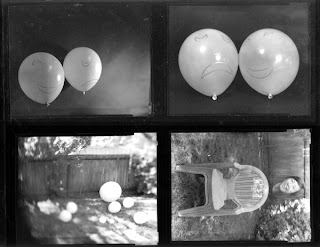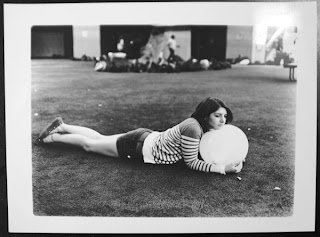This week, we finished up our first rotation (mine being the large format view camera).
In this rotation, I primarily worked with balloons, but also experimented with what I call partial exposures and adjusting the plane of focus of the camera.
Overall, working with the view camera is very rewarding, because it is a very mechanical and visceral process. The camera is not as automated as the SLRs we worked with in Beginning Photography, which slows the photo-taking process down - which is beneficial in that it makes the photographer pause to further contemplate their photo, but makes the photography process somewhat more difficult as well, in that the photographer gets fewer chances in a given period of time to get a successful photo.
Below are a few samples of the various work I did. (I have not included the partial exposures because I posted them in Polaroid format a few blog posts back)



-Kevin













































